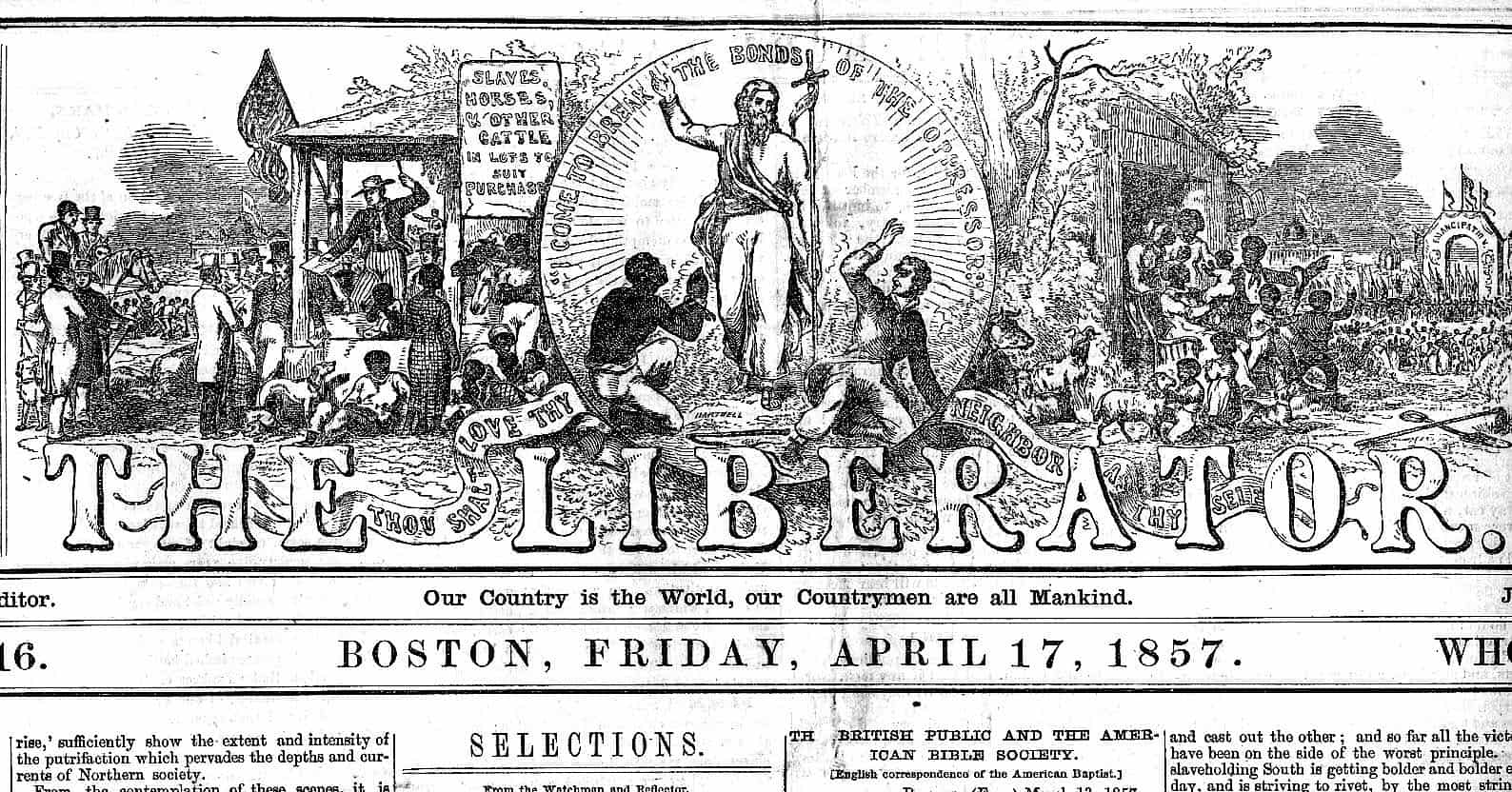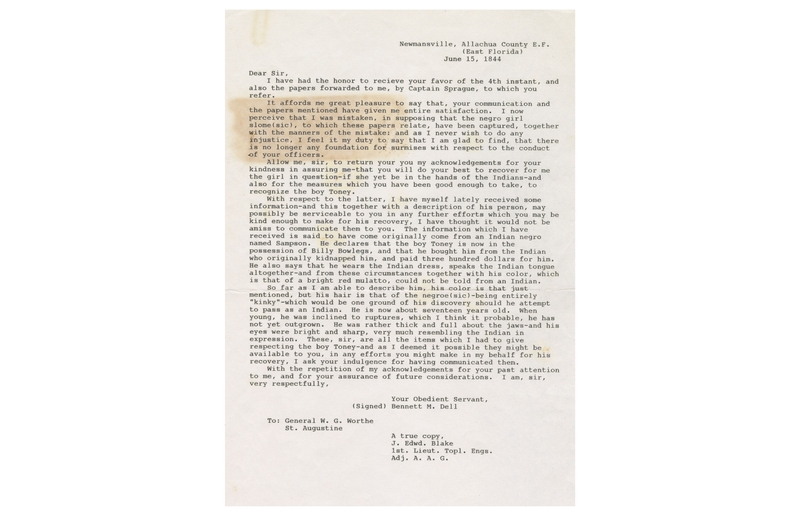Correspondence

This curated collection presents original letters and documents related to the institution of slavery in the 18th and 19th centuries. Each correspondence offers a unique lens into the lived realities of enslaved individuals, the operations of the slave trade, and the efforts of those who opposed it. Through personal accounts, legal records, and commercial exchanges, these rare papers showcase the economic preservation of slavery, often neglecting or disconnected from the human experiences behind the finances.
Featured Historical Correspondence – June 15, 1844
This letter, dated June 15, 1844, was written by Bennett M. Dell from Newnansville, East Florida (present-day Alachua County), to General W.G. Worthe in St. Augustine. It forms part of a larger body of correspondence that reveals the complicated social, political, and racial dynamics of antebellum Florida, especially during the turbulent years following the Second Seminole War.
In this letter, Dell acknowledges the receipt of prior communications and official documents, correcting his earlier belief that a specific enslaved girl had been captured. He expresses appreciation for the efforts made to recover her if she is still in the hands of Native Americans. The majority of the letter, however, focuses on a detailed description of a boy named Toney, who was also enslaved and believed to be held or recently sold by Indigenous individuals.
Dell provides a physical description of Toney—believed to be about seventeen years old, with mixed African and Native ancestry—as well as details of his capture and resale. He notes that Toney was originally kidnapped by an Indian man named Sampson, sold to another named Billy Bowlegs, and later ransomed for three hundred dollars. The letter further describes Toney's appearance, behavior, and speech, reflecting the racialized identification practices of the time.
This document illustrates the intersection of slavery, Indigenous displacement, and settler colonialism in Florida’s territorial history. It offers a rare written account of the pursuit and identification of escaped or captured enslaved people, as well as insight into the language and assumptions used by white authorities in their attempts to reclaim human property. As such, it stands as a powerful artifact in understanding the lived realities of enslaved people, and the efforts by white officials to maintain the system of slavery amid conflict and resistance.
